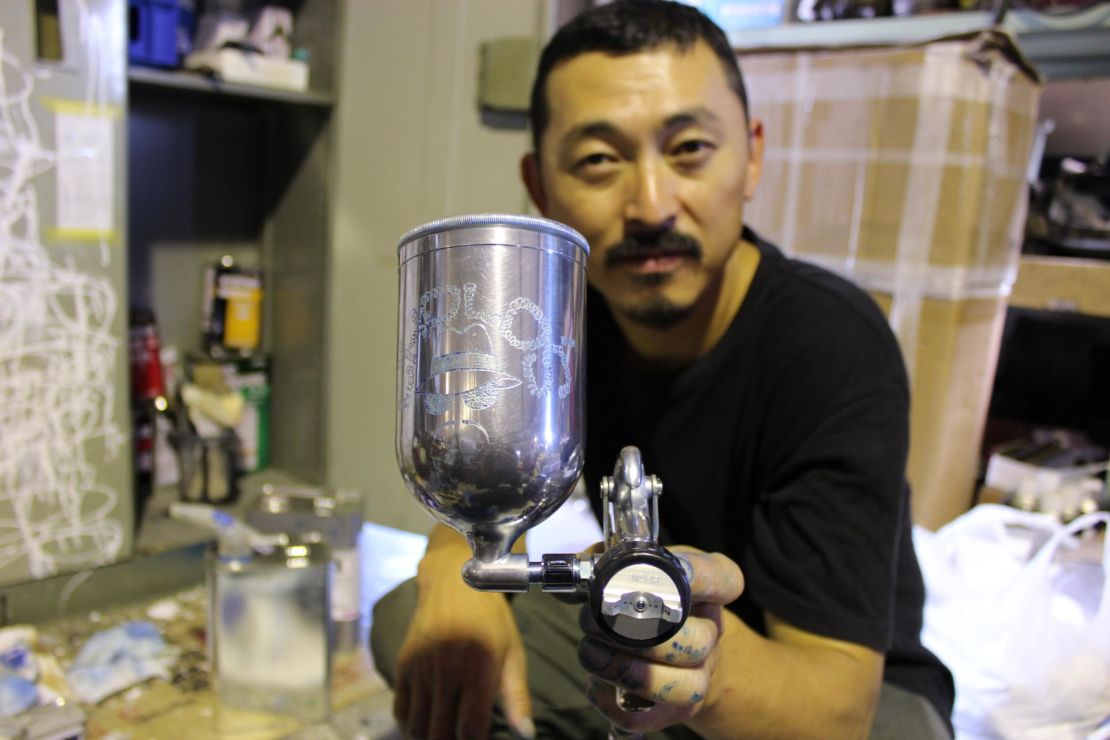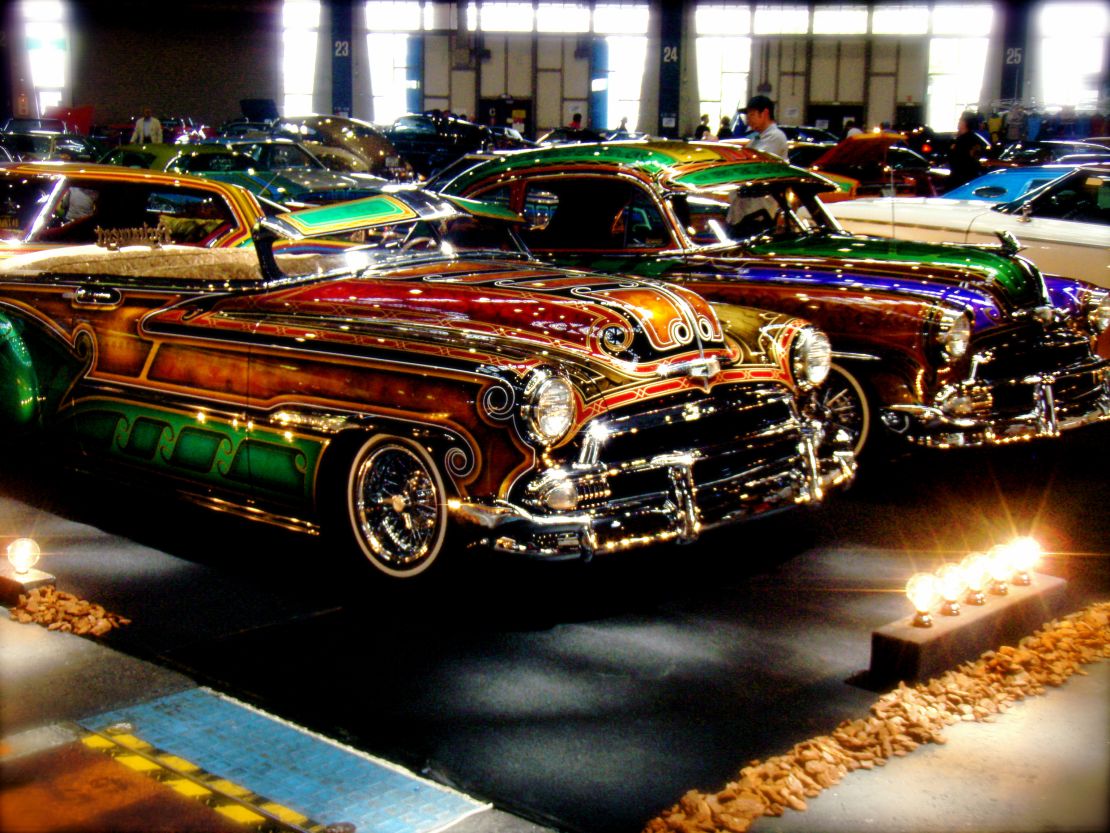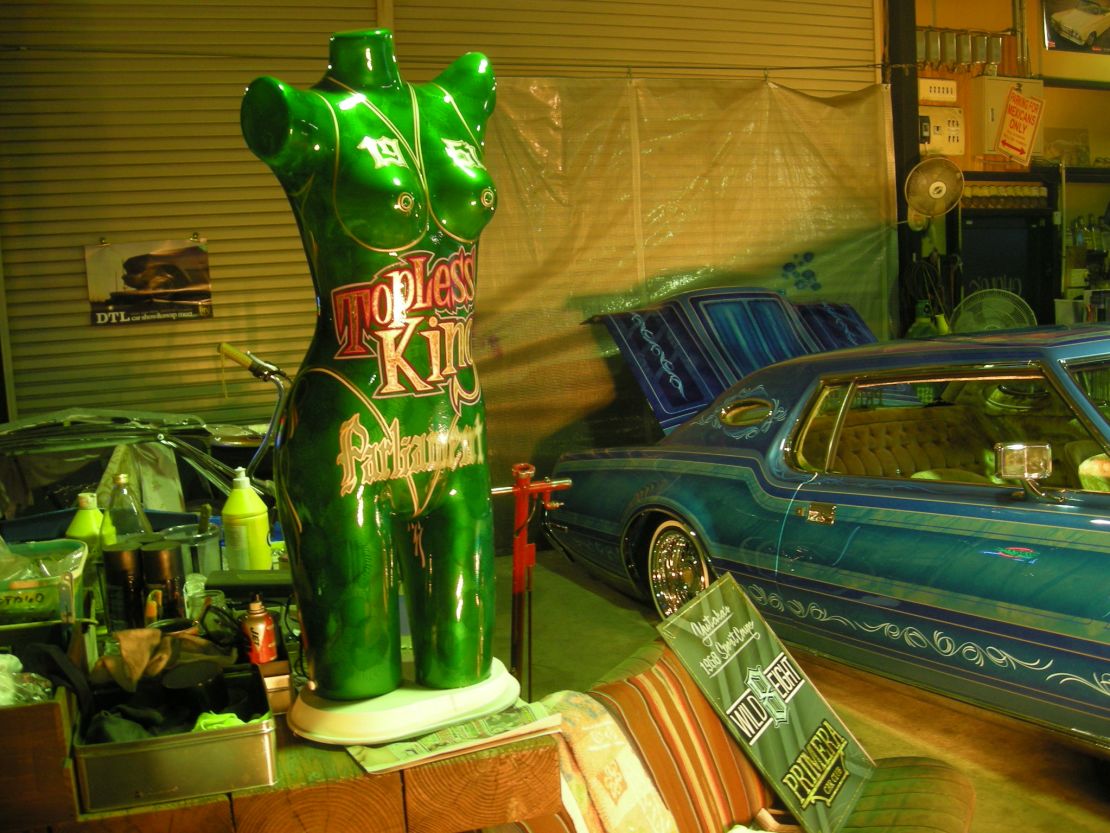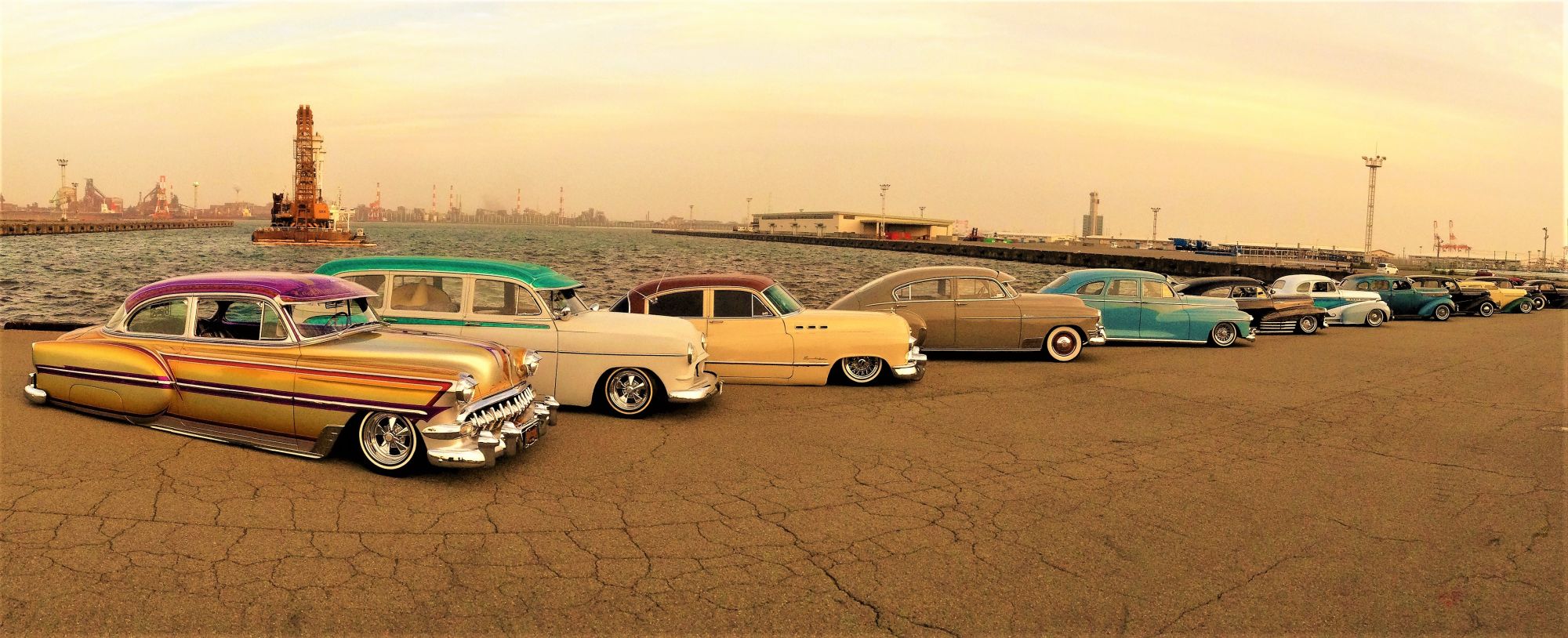Parked in a row, their undersides almost glancing the asphalt, these ornate and outsized American cars stand out in a sea of Hondas, Toyotas, Nissans and Subarus.
A gold-colored 1954 Chevrolet 210, christened “Sphinx,” squats either side of “Eltesoro,” a creamy green 1936 Dodge sedan, and “La Vida Rosa,” a bright pink 1954 Mercury Monterey. All three are customized vehicles belonging to one of Japan’s oldest lowrider clubs – Pharaohs.
Lowriding was first popularized in southern California in the 1940s, when Mexican-Americans emblazoned US-made cars with vivid designs and colors, customizing them to cruise “low and slow.”
Meet Japan's 'lowriders'
As the culture expanded across the States in the decades after World War II, its appeal – based on a marriage of mechanics and art – also grew overseas.
In the mid-1980s, at the height of the country’s bubble economy, Japanese car enthusiasts started importing models such as the Impala and the Ford Mercury, replete with Chicano artwork and hydraulics.

Pharaohs member (and owner of the aforementioned “Sphinx”) Hisashi Ushida, 46, first saw lowriders on the streets of Nagoya when he was in high school. While he recalled being immediately hooked, Ushida didn’t have the means to splash out on American cars.
“Instead we bought small trucks and tried to remodel them like lowriders,” Ushida said in a phone interview. “Things got more genuine when I met the owner of Paradise Road, (an import and custom garage) run by Junichi Shimodaira. He was the one who really showed me how to remodel aind customize cars.”
A trans-Pacific partnership
Shimodaira is considered a pioneer in lowrider circles on both sides of the Pacific. After spending time in southern California in the early 1980s – touring, meeting and connecting with lowriders – the 58-year-old returned to Nagoya, a city with strong links to car manufacturing, and founded Pharaohs.
Nagoya was already known as the home of Lexus (and is within an hour’s drive of Toyota City, where the eponymous carmaker assembled its first vehicle). But Shimodeira was instrumental in promoting customization in the city, bringing a new flavor and car culture to its streets.
For the members of Pharaohs, their regular get-togethers reflect the club’s age. “We go cruising, go for picnics and, occasionally, we have meet-ups and parties or barbecues with other car clubs,” Ushida said.

With about 25 members, Pharaohs is fairly typical of Japan’s male-dominated car clubs. Ushida said that the groups’ popularity peaked around the year 2000. But the culture still seems to have a strong and loyal following, and in 2003, he opened Cholos, a custom garage in Nagoya.
For Ushida, the attraction to lowriders is twofold: “There’s the pleasure that comes with driving a cruiser but also the excitement that goes with customization.”
A ‘spiritual connection’
Having documented Japan’s lowrider culture in Japan since 2001, 38-year-old photographer Luke Dorsett estimates that there are around 200 active clubs in the country.
Much like in east Los Angeles, lowriding in Japan offers a sense of community and identity, said Dorsett, who sees a “spiritual connection” between Chicano and Japanese cultures.

“You have two cultures that are into handcrafted art,” the Phoenix-based photographer said in a phone interview. “They’re both very oriented to detail.
“(Japanese lowriders) are thinking, ‘I could shave my head, throw on some sunglasses, wear the clothes and I would fit right in,’” Dorsett said. “They could be in L.A.”
Dorsett, who is producing a book about lowriding around the world, said that, in the beginning, Japan imported Californian lowrider culture wholesale. But eventually the motifs and symbols started to become more Japanese.

“When it first started in Japan, the cars would go over there and look exactly the same as in America. They wouldn’t modify them or change them that much, so the artwork on the cars would look like they were Chicano.”
“What ended up happening later was the artwork would depict the owner. They started putting their own twist on it. That’s been exciting to see.”
Culture club
In Japan, just like the US, lowriding is about much more than the cars themselves. For 49-year-old Shigeru Sato, a custom car shop owner from Toyonaka in Osaka prefecture, it was the wider culture surrounding lowriding that inspired him to set up his own club, Stylish Car Club.
“In America, lowrider culture is not only about customizing cars, it’s about fashion, music, and family,” said Sato, standing in the tidy garage where he keeps his Cadillac and Chevrolet Impala.
For Sato, whose son is also a lowrider, the generational ties are especially important.

At Stylish Car Club, which Sato established 20 years ago, it’s not just about the cars but also a shared sense of culture. Adhering to this principle this is a prerequisite for new members.
“I want to be sure that anyone who joins is really immersed in the culture,” Sato said.
“And I want them to not only enjoy customizing cars, but to also familiarize themselves with the fashion and music as well.”
But, as Sato acknowledges, showing off the stylized cars is still an important ritual for lowriders.
“Lowriders like the attention,” Sato said. “We often cruise to Dottonbori in Osaka where it’s crowded and you get a big audience. We might look a bit like gangsters, but we all have families and regular jobs. We just admire the culture.”
This article has been updated to reflect the correct car type being imported, Ford Mercury.




















